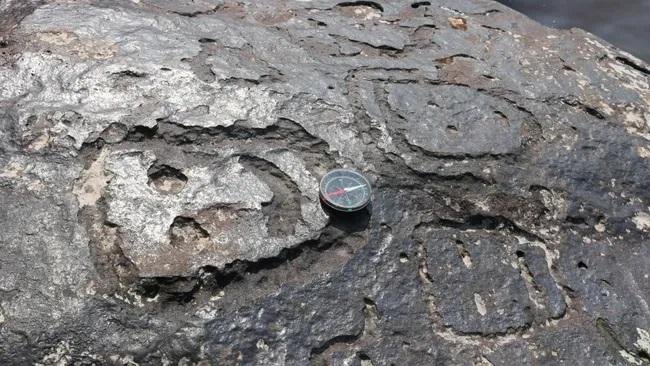A historic drought in the Brazilian Amazon has unveiled petroglyphs, including human faces, etched into riverbanks along the Rio Negro. The drawings, estimated to be between 1,000 and 2,000 years old, have emerged due to a dramatic drop in water levels during an unusually severe dry season attributed to the El Niño weather pattern and warming in the North Atlantic linked to the climate crisis.
 A severe drought in the Amazon has revealed petroglyphs, including human faces. Credit: Carlos Augusto Silva
A severe drought in the Amazon has revealed petroglyphs, including human faces. Credit: Carlos Augusto Silva
The petroglyphs, which include depictions of human faces, animals, and natural forms, had been previously sighted in 2010 during a severe drought when the Rio Negro’s water levels plunged to 13.63 meters, then an all-time low. This year, the river dropped below 13 meters for the first time in recorded history, with a depth of 12.89 meters recorded recently.
Some of the rock carvings, referred to as petroglyphs, include engravings of human faces showing various expressions. Jaime de Santana Oliveira, an archaeologist, mentioned that while the exact dating of these engravings remains challenging, they are believed to be approximately 1,000 to 2,000 years old based on evidence of human occupation in the area.
Beyond the human faces, the petroglyphs also feature depictions of animals and river currents. Furthermore, the site reveals smooth grooves on the rocks, indicating that it might have served as a tool preparation area where Indigenous inhabitants sharpened their tools, including arrows and spears.
The site is known as Ponto das Lajes, located on the north shore of the Amazon, near the confluence of the Rio Negro and Solimoes rivers. It is noted that previous carvings had been observed at this site in 2010, but the severity of this year’s drought, with the Rio Negro’s water level dropping by 15 meters (49.2 feet) since July, has led to the exposure of an even larger number of petroglyphs.
This time, the petroglyphs include sculptures of human faces, adding a new dimension to the archaeological discovery.
These discoveries are significant not only for researchers but also for the local community. The drought affecting the Amazon has had profound effects on transportation, supplies, and the environment. With normal riverbanks dried up and boats stranded, local residents have expressed concerns about the future of the Amazon’s ecosystems and the river itself.
These petroglyphs reveal a connection between today’s world and the history of Indigenous communities that thrived in the Amazon.





